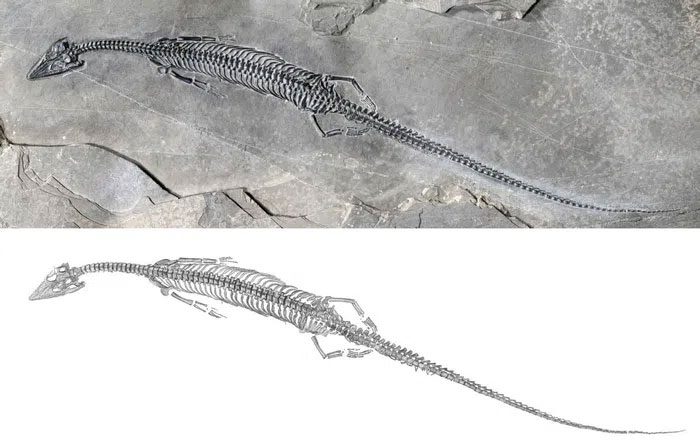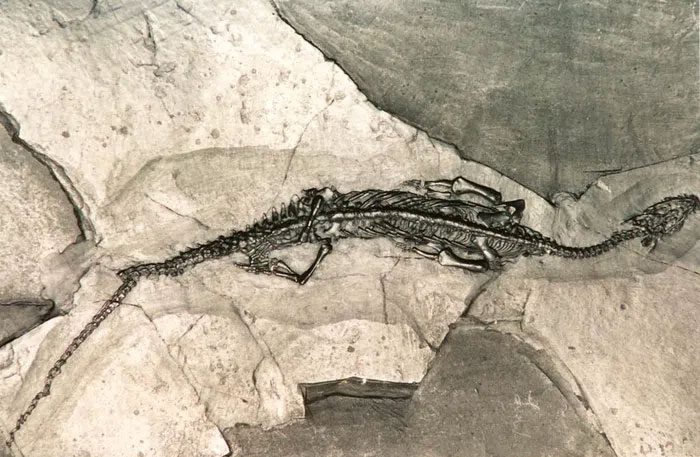In the world of reptiles, tail size is very important. Some species use their long tails for balance, such as the Asian grass lizard. Meanwhile, marine reptiles utilize their tails for propulsion and maneuverability.
In early May, Chinese scientists announced the discovery of a complete fossil skeleton of a marine reptile in Yunnan Province, which roamed the ancient seas approximately 244 million years ago during the Triassic period.

The fossil of the species Honghesaurus longicaudalis features the longest tail among known pachypleurosaurs. (Photo: China Daily)
The prehistoric creature has been named Honghesaurus longicaudalis, possessing the longest tail of any known Pachypleurosaur species. This discovery also marks the oldest fossil record of this group of reptiles in China.
Pachypleurosaurs are a group of small to medium-sized marine reptiles resembling lizards from the Triassic period. The fossil measures 47.1 cm in length, with a tail that exceeds half the body length at 25.4 cm. Notably, the tail of this reptile contains 69 vertebrae, more than any other Pachypleurosaur species, which typically have no more than 58 vertebrae.

An image of the reptile belonging to the Pachypleurosaur group. (Photo: Internet)
According to a study published in the journal Scientific Reports, scientists believe that the long body combined with a long tail could provide this reptile with excellent aquatic agility, making it a “superb swimmer.”
In 1854, scientists discovered the fossil of Pachypleurosaurus in the Alps. Pachypleurosaurs are considered members of the Superorder Sauropterygia, which includes Plesiosaurs—a type of marine reptile that dominated the seas during the Jurassic period and frequently appears in mythology and popular culture.





















































